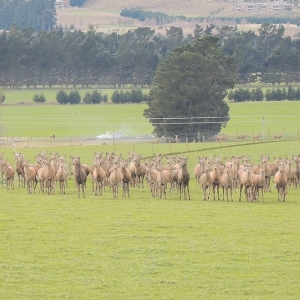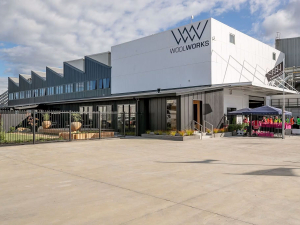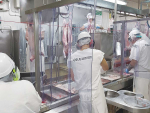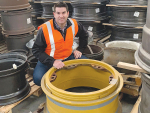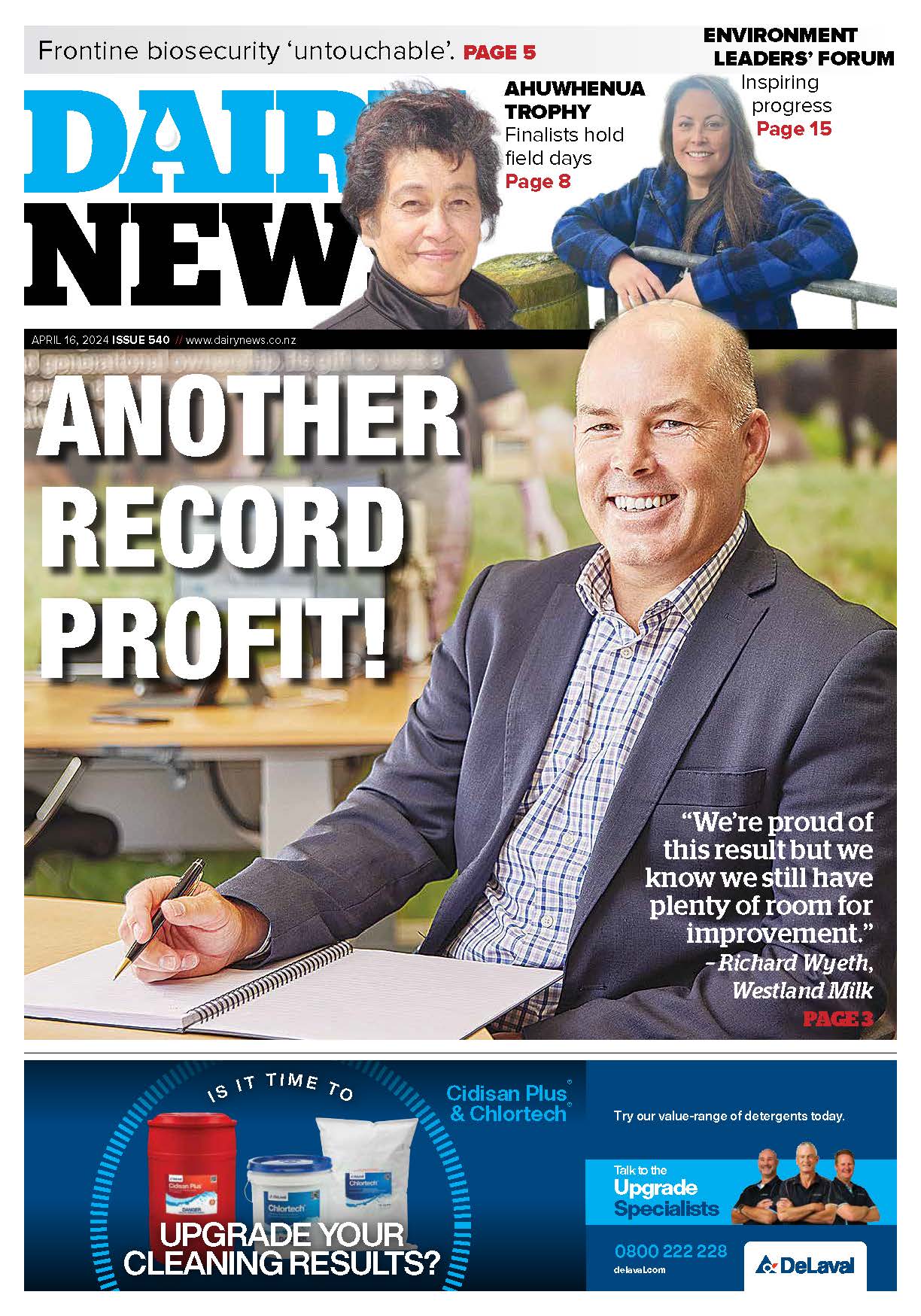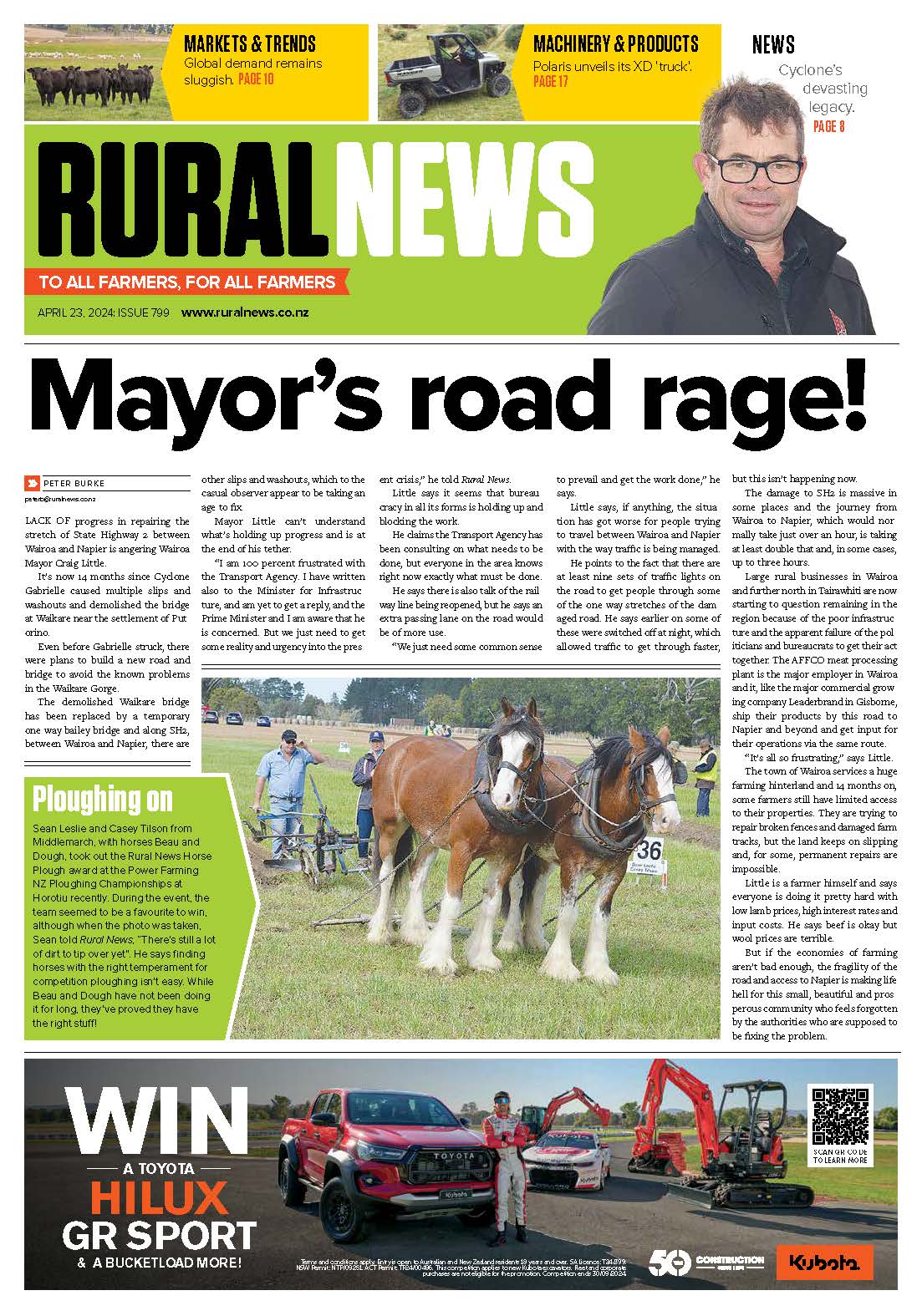“We are in a development stage,” host farmer Bruce Hood told the field day. Lower blocks are being sub-divided and the one remaining hill block which isn’t deer fenced is on the ‘to do list’.
They’ve also invested in a new weighing system and crush, and are using DNA testing to check parentage of potential replacement hinds and stags.
“My eyes were getting tired of looking through binoculars,” quipped Hood, who kept the field day flowing with wise cracks and self-deprecating humour.
The DNA parenting is for on-farm selection: the station’s sales complex hasn’t seen an auction since the late 1990s. They need over a 100 breeding stags/year and over 90% are homegrown. AI, embryo transfer and a few buy-ins are helping increase the English influence for a hardier, possibly slightly smaller, hind while improving velvet weights.
Velveting stag selections are, where possible, made with two-year-olds. “Some don’t mature early enough to select as spikers.”
But the maximum they can carry to two years is 500, and this year they’ve only held onto half that number.
“All the best stags have probably been killed as spikers!”
Selection is “by eye”, breeding, and measurement of antler length and thickness. A quarter of the R2s are culled on weight and style too. Culling of mixed aged stags is on velvet cut, regrowth included, as well as condition and age. Total velvet production is about 8t/year.
Fawning averages 85-88% from hinds put to stags. Almost all yearlings are mated with surplus in-calf yearlings sold to “a ready market”. Yearlings are scanned, with an initial result of 87% this year. Hood told Rural News he expects that to improve to around 90% with a rescan of empties.
Pastures are regularly renewed with Samson currently the main grass cultivar. Alternative pasture species plantain is showing promise but chicory’s been shelved.
“We couldn’t keep on top of it. We could have had twice the stock on it in spring and summer but then we’d have to halve our numbers in autumn and winter.”
With the exception of a silage chopper they run all their own cultivation, drilling, and forage kit.
“We make as many bales as we’re allowed... It’s an insurance policy because you never know what the weather is going to throw at you here.”
Winter feed crops include swedes, kale, rape and oats. Fodder beet has been tried but the station’s location, at the mouth of the Rakaia valley, means there’s a high risk of windblow.
“You saw that crop of fodder beet in the neighbours’ paddock? Well that was ours!”
More seriously, Hood added they can see fodder beet’s potential, particularly if, by lifting and carrying, stags could be kept on back country longer.
“But we just can’t get the yield equivalent to Swedes. If we could grow over 20t/ha, then certainly.”
When they tried fodder beet weaners on it were the best performing mob for a couple of months, but then went off it, suggesting a limit to how long it can be utilised by deer.
“They were eating flowering kale and leaving the fodder beet.”
Hood’s enthusiasm for the sector was clear during the field day, and his commitment evidenced by the revelation he’d turned down $2000/ha/year for dairy grazing on lower country.
Nonetheless, the business hasn’t been immune to the tide of land use change, with a leaseblock across the Rakaia lost to dairy support.
“We used to send 1000 [older] hinds over there.”
Typically though, Hood later told Rural News that while there will be some impact on their stock numbers, “with all the development we’ve got going on hopefully we can keep close to that number. We may just need to cull a little earlier and harder here.”





